UC Gardening Blogs
Godzilla Lives!
Remember Godzilla? The 1954 iconic film, Godzilla, featured what Wikipedia calls "an...
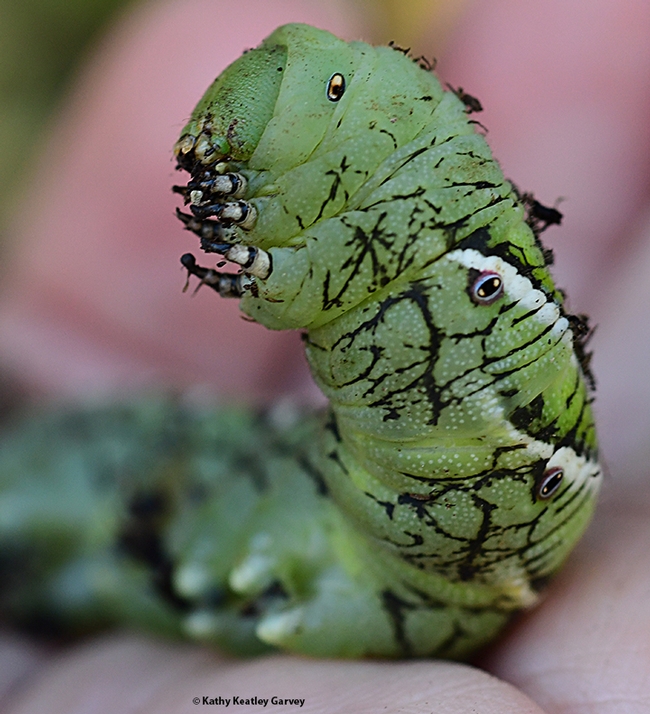
This three-inch-long tobacco hornworm appears to be ready to eat more tomato leaves (or the photographer). (Photo by Kathy Keatley Garvey)
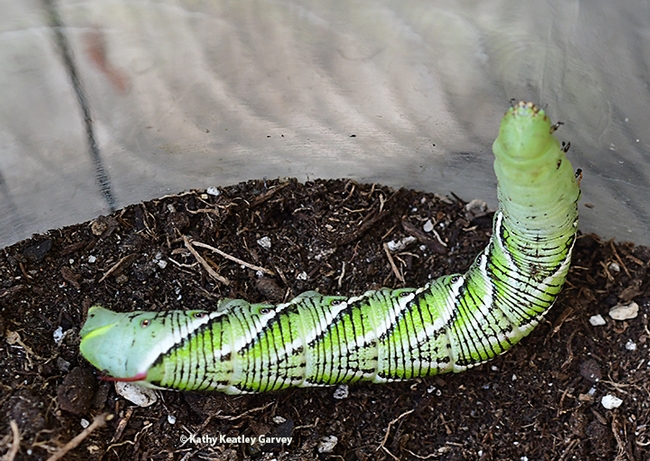
"Godzilla" roaming around her habitat. Tobacco hornworms (Manduca sexta) become Carolina sphinx moths, also known as hawkmoths or tobacco hawkmoths. (Photo by Kathy Keatley Garvey)
Escape to the Nursery
It is late summer now and moving quickly into fall. I am looking forward to this coming season because of the vibrant colors, cooler weather, hopefully, some rain, and the planning for the next crop of interesting plants.
I have three raised garden beds and am still getting harvest from one that has the late-blooming crops of eggplant, tomatoes, and peppers. Originally, I was thinking about planting basic cover crops in the other two non-producing beds to replenish their nutrients. I hate to admit this because I am a passionate gardener, but I was frankly looking forward to taking a hiatus from planting to just take some time to relax in the garden.
However, my plan came to a quick halt after attending some inspiring Master Gardener events that focused on planting a winter vegetable garden. As many gardeners can attest to, once you get that notion and desire to do some planting, there is no going back! It was on a recent Saturday evening that I came to realize that I needed to plant a winter veggie garden as soon as possible.
So, how to plan out this new project? Things to consider for preparation:
- Pull out the depleted summer veggie plants,
- Add compost to the garden beds – do not till it in too much, just mix gently so the soil components (minerals, organic matter, water, and air) are not disrupted; and
- Identify plants to purchase, Yay!
Of course, all previous commitments went to the wayside. So, on Sunday I set out to a nursery to find my fall veggie seedlings but did not have much luck. Meanwhile, I heard of another nursery that had just placed many of their winter veggie seedlings out on the sales floor. BUT they aren't open Monday…oh, the patience to wait until Tuesday for my desperately needed veggie starts – and I had to work my regular job first thing Tuesday morning!
OK – new plan – get up extra early on Tuesday since I do not need to be available for work until 10:00. So, when does the nursery open? I had to get up early and be at the nursery at 9:00 in the morning, focus on the list of winter veggie plants and please do not let me stroll away to herbs and other native plants… Just stay focused on the winter veggie plants right now…stay focused!
On the way over there - I don't know how to explain it - but I almost felt like a little kid playing hooky – sneaking over to the nursery before work to snag the best plants...When I got there – WOW! I was overwhelmed! Not only did they have every plant on my list, but ‘then some'!
I found my plants - Broccoli, Cauliflower, Cabbage, Spinach, Lettuces, Radish & Artichoke – and quickly headed back home with my treasures to be planted in a few days… and made it just in time for my online meeting with colleagues… mission accomplished!
Now for the fun part…as you can see with the photos!
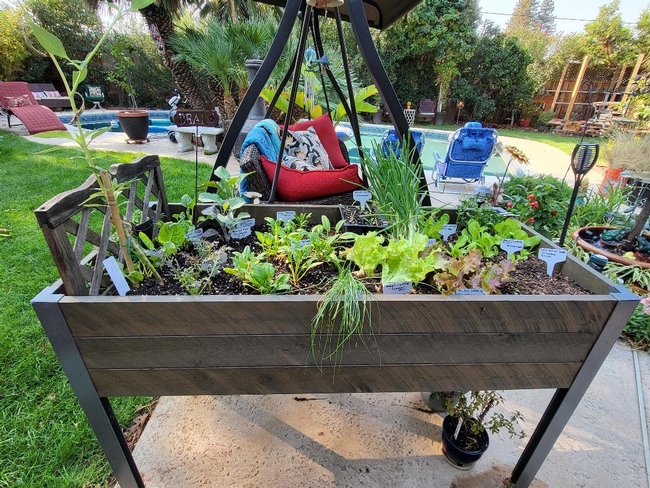
Winter Lettuce & Spinach Garden - photos by Paula Pashby
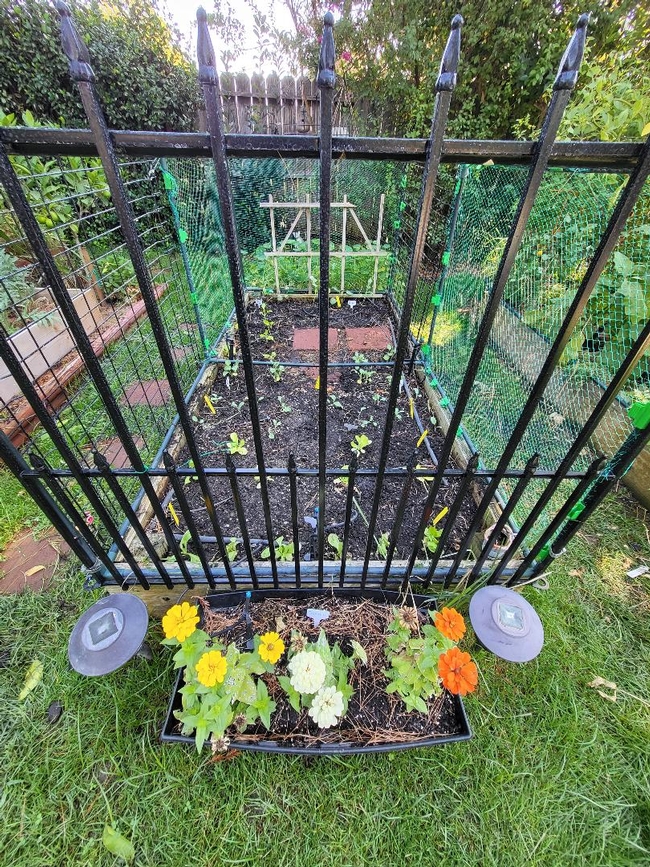
Broccoli, Cauliflower, Radish, Cabbage
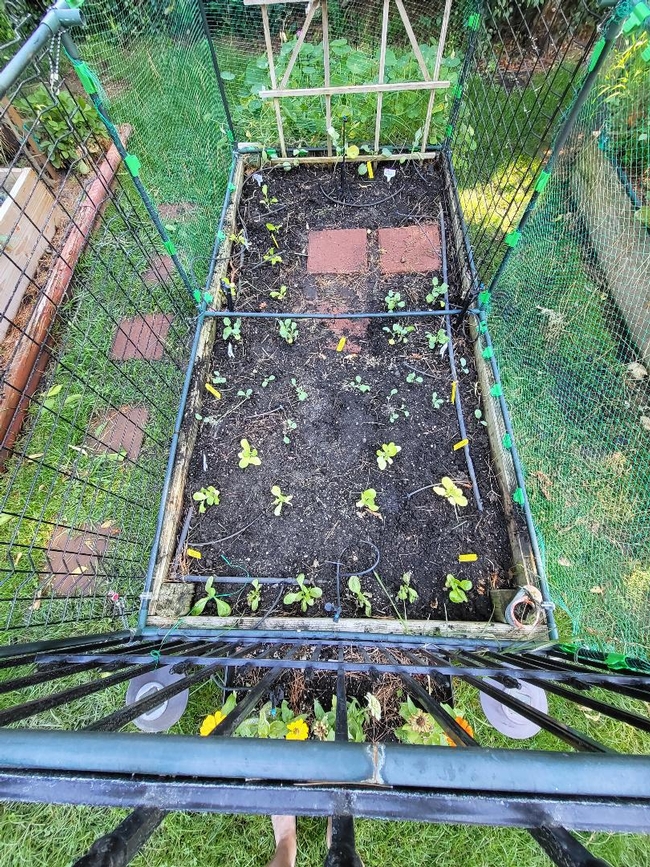
Peeking over the fence at Broccoli, Cauliflower, Radish, Cabbage
What Makes a Plant Drought Tolerant?
You've seen these terms often: “drought tolerant” and “water-wise.”...
A Sight to See Is This Bee
Ever seen a green metallic sweat bee? The colors are exquisite. This is a female...
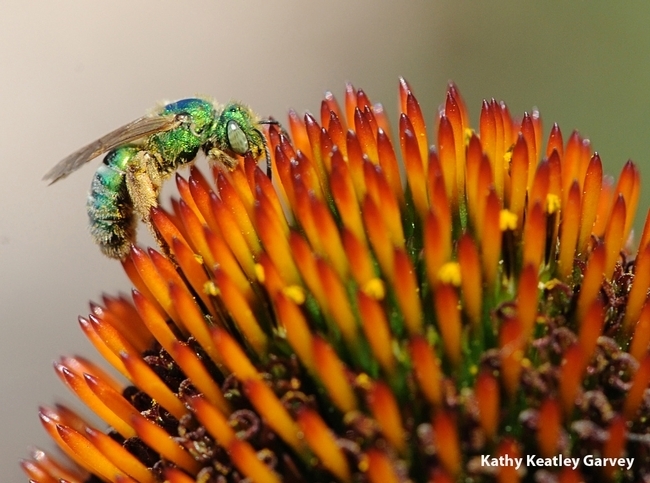
A female metallic green sweat bee, genus Agapostemon, on a purple coneflower. (Photo by Kathy Keatley Garvey)
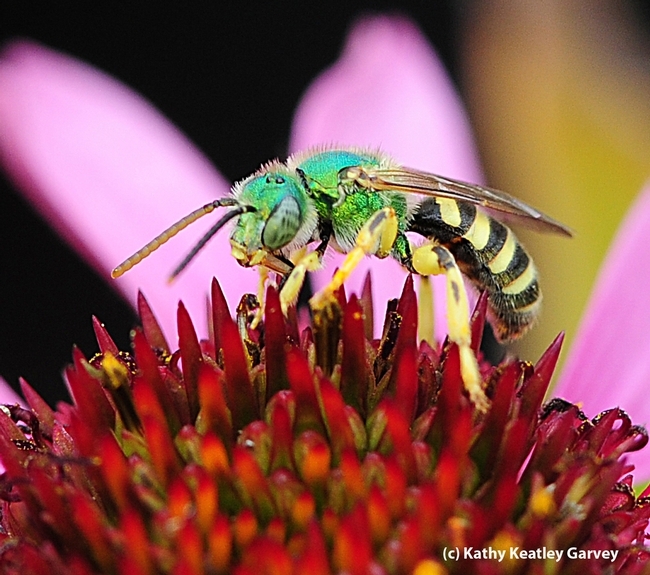
A male metallic green sweat bee, genus Agapostemon. (Photo by Kathy Keatley Garvey)
Figs
Many years ago, as a student at CSU Fresno, I frequently drove the backroad off of Highway 99 into the campus. At that time the road had no traffic lights until really close to the school. I drove by what seemed like miles of fig orchards and then a shopping center appropriately called Fig Garden Village. I asked a friend a few years ago about her recent trip to the campus. She told me my old route was no longer miles of orchards, but now miles of traffic lights and businesses.
I didn't really appreciate the fig trees then, except as a peaceful last stretch into the campus. My only experience with figs to that point in time was eating Fig Newtons.
Figs are not technically a fruit, but a little bundle of tiny flowers inside a small, thin sac. There are basically 3 kinds of figs, but lots of varieties. Most figs grown in home gardens are called common figs. What's nice about these is that only takes one tree to get figs. Common figs are self-pollinators. Some varieties in this category are 'Brown Turkey' and 'Celeste'. The second kind is the 'Smyrna' fig requiring cross-pollination from a caprifig by a fig wasp carrying the pollen. No pollination equals no figs. The third type has two crops of figs. The first in the spring grows on the prior year's shoots and doesn't require pollination, but the second crop in the late summer/fall that grows on the current year's shoots does. This second crop is the main producer. The first crop usually produced in June is used commercially as fresh fruit. Shelf life is really short. The second crop is dried and used as fig paste.
If you like figs, these are great deciduous trees for the home garden. They can be grown in pots or in the ground. Potted figs need a sunny spot and consistent moisture and they can easily be grown in pots with reservoirs. Multi-stemmed plants are attractive in the home garden and can be put directly in the ground. All that's needed is sun and soil with good drainage year-round. Potted trees do need fertilizer, but the in-ground ones usually take care of themselves at the expense of nearby plants. Trees in the ground can grow to 30 feet tall and wide. Pruning them does not hurt them. Do it when the tree is dormant. Keep them smaller, so you can pick the fruit without getting on a ladder.
To harvest your fig crop, here's what to look for: The fruit changes color. When it starts to droop on the branch, and the fig neck gets soft and the skin cracks, pick it. Don't wait. The window is short. Other critters will get the fresh fruit before you do or it will land in a messy splat on the ground.
Long after my CSU Fresno commutes, and for many years, I helped an elderly British friend pick his crop. He and his wife would dry some of the fruit in their garage and would make jam out of the rest. He had one large, unpruned tree, so I was on a ladder with kitchen gloves in my nursing scrubs after my shift had ended. It was a messy job. The fuzzy leaves and the white milky sap from the stems made me incredibly itchy. The glove fingers would even stick together. Upon finishing, I would spend at least 10 minutes scrubbing any part of my arms not covered by my scrubs and the gloves trying to get rid of the itchiness.
And so that brings me to this final fig thought: Did Adam and Eve really wear fig leaves?
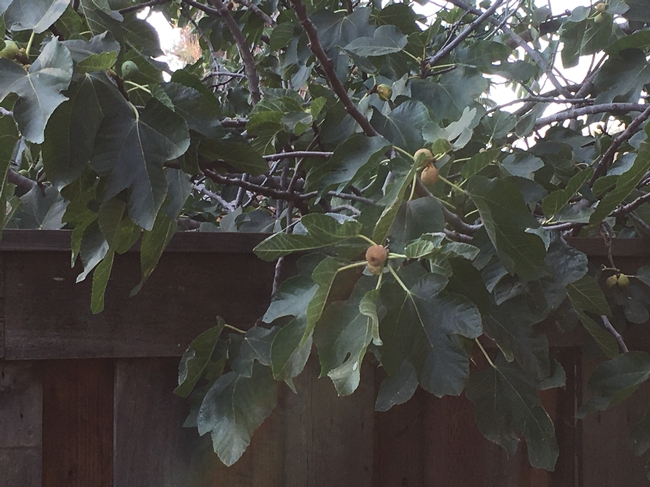
photo by Michelle Davis



